Embroidery stitches are the smallest units in embroidery. Embroidery patterns are formed by doing many embroidery stitches, either all the same or different ones, either following a counting chart on paper, following a design painted on the fabric or even working freehand.
Straight stitches
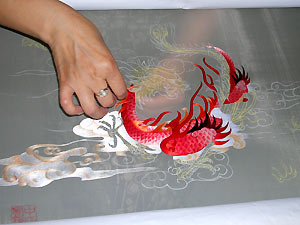
Straight stitches pass through the fabric ground in a simple up and down motion, and for the most part moving in a single direction.
Back stitches
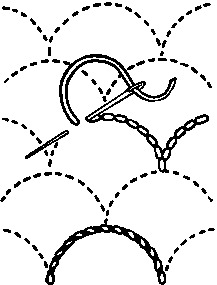
Back stitches pass through the fabric ground in an encircling motion. The needle in the simplest backstitch comes up from the back of the fabric, makes a stitch to the right going back to the back of the fabric, then passes behind the first stitch and comes up to the front of the fabric to the left of the first stitch. The needle then goes back to the back of the fabric through the same hole the stitch first came up from. The needle then repeats the movement to the left of the stitches and continues.
Chain stitches
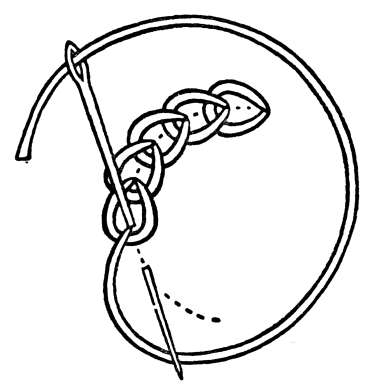
Chain stitches catch a loop of the thread on the surface of the fabric. In the simplest of the looped stitches, the chain stitch, the needle comes up from the back of the fabric and then the needle goes back into the same hole it came out of, pulling the loop of thread almost completely through to the back; but before the loop disappears, the needle come back up (a certain distance from the beginning stitch -the distance deciding the length of the stitch), passes through the loop and prevents it from being pulled completely to the back of the fabric. The needle then passes back to the back of the fabric through the second hole and begins the stitch again.
Buttonhole stitches
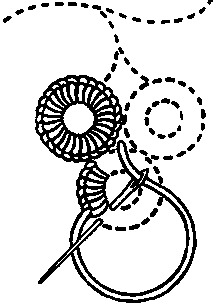
Buttonhole or blanket stitches also catch a loop of the thread on the surface of the fabric but the principal difference is that the needle does not return to the original hole to pass back to the back of the fabric. In the classic buttonhole stitch, the needle is returned to the back of the fabric at a right angle to the original start of the thread. The finished stitch in some ways resembles a letter "L" depending on the spacing of the stitches. For buttonholes the stitches are tightly packed together and for blanket edges they are more spaced out. The properties of this stitch make it ideal for preventing raveling of woven fabric. This stitch is also the basis for many forms of needle lace.
Feather stitches
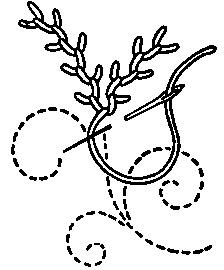
Feather or fly stitches also catch a loop of thread on the surface of the fabric but they differ from buttonhole stitches in that the catching of the loop is not at right angles or it alternates from side to side. The result is a very naturalistic looking stitch that is often used to make leaves and branches.
Knotted stitches
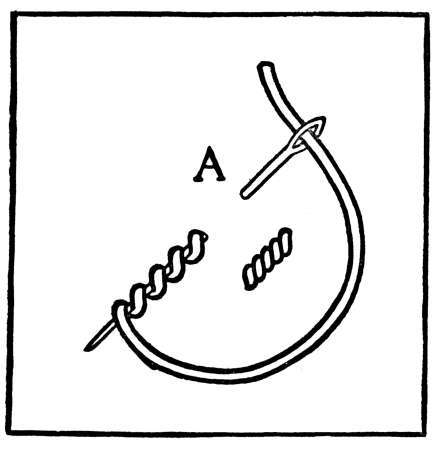
Knotted stitches are formed by wrapping the thread around the needle, once or several times, before passing it back to the back of the fabric ground. This is a predominate stitch in Brazilian embroidery, used to create flowers. Another form of embroidery that uses knots isCandlewicking, where the knots are created by forming a figure 8 around the needle.
Couching and laid work
Couching or laid stitches involve two sets of threads, the set that is being 'laid' onto the surface of the fabric and the set which attach the laid threads. The laid threads may be heavier than the attaching thread, or they may be of a nature that does not allow them to be worked like a regular embroidery thread, such as metal threads.





